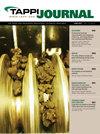迈向纤维素纳米材料商业化:根据全球统一系统的安全数据表的知识差距分析
IF 0.6
4区 农林科学
Q4 MATERIALS SCIENCE, PAPER & WOOD
引用次数: 18
摘要
纤维素纳米材料(CNs)的商业化正在迅速推进,使许多最终用途产品部门受益,提供有关CNs安全制造和处理的信息是一个优先事项。工业生产的材料需要安全数据表(SDS),以传达有关其潜在健康、火灾、反应性和环境危害的信息,并就如何安全使用这些材料提供建议。纤维素和纤维素纸浆具有广泛的商业最终用途,在干燥时可能产生讨厌的灰尘,并且需要有SDS。因此,我们预计纳米级形式的纤维素也将需要SDS。本研究确定了目前可用的神经网络SDS信息,并强调了我们知识中的现有差距。随着美国和国际上采用全球危害沟通协调系统(GHS),生产商被要求报告SDS已知数据和数据差距。鉴于所有纳米材料的新颖性,最好在SDS中填补这些空白,以证明我们对这些材料的安全生产和使用的承诺。为了评估SDS信息的可用性并为CNs的商业化做准备,我们评估了CNs可用的安全信息,以确定可用的GHS SDS数据、数据缺口,以及需要开发哪些数据才能根据GHS对CNs进行全面分类。具体来说,我们报告了纤维素纳米材料的毒理学特征、环境特征、物理和化学性质、暴露控制和个人保护方面的现有数据和差距,以鼓励开发缺失的数据并推进安全商业化。应用:根据GHS为SDS设定的标准,通过提供现有的和缺失的数据和研究信息,沟通安全处理和使用cnns所需的信息,工业可以证明这些材料的安全性,确保达到其最大的市场潜力,并且不会因为安全使用的不确定性而延迟商业化。本文章由计算机程序翻译,如有差异,请以英文原文为准。
Toward cellulose nanomaterial commercialization: knowledge gap analysis for safety data sheets according to the globally harmonized system
: Commercialization of cellulose nanomaterials (CNs) is rapidly advancing, to the benefit of many end-use product sectors, and providing information about the safe manufacturing and handling for CNs is a priority. Safety Data Sheets (SDS) are required for industrially produced materials to communicate information on their potential health, fire, reactivity, and environmental hazards, and to provide recommendations on how to safely work with these materials. Cellulose and cellulose pulp, which have widespread commercial end uses, can create nuisance dusts when dried and are required to have SDS. We therefore expect that nanoscale forms of cellulose will also require SDS. This study identifies the currently available SDS information for CNs and highlights existing gaps in our knowledge. With U.S. and international adoption of the Globally Harmonized System (GHS) for Hazard Communication, producers are required to report SDS known data and data gaps. Given the novelty of all nanomaterials, it is preferable to fill these gaps in SDS as a demonstration of our commitment to the safe production and use of these materials. To evaluate the availability of SDS information and prepare for commercialization of CNs, we assessed available safety information for CNs to identify available GHS SDS data, data gaps, and what data need to yet be developed to fully classify CNs according to the GHS. Specifically, we report on the available data and gaps regarding the toxicological profile, environmental characteristics, physical and chemical properties, exposure controls, and personal protection for cellulose nanomaterials, to encourage the development of missing data and advance safe commercialization. Application: By providing information on available and missing data and research needed to communicate the safe handling and use of CNs according to the criteria set by the GHS for SDS, industry can demonstrate the safety of these materials, ensuring their maximum market potential is reached, and commercialization is not delayed because of uncertainties about safe use.
求助全文
通过发布文献求助,成功后即可免费获取论文全文。
去求助
来源期刊

Tappi Journal
工程技术-材料科学:纸与木材
CiteScore
1.30
自引率
16.70%
发文量
59
审稿时长
6-12 weeks
期刊介绍:
An internationally recognized technical publication for over 60 years, TAPPI Journal (TJ) publishes the latest and most relevant research on the forest products and related industries. A stringent peer-review process and distinguished editorial board of academic and industry experts set TAPPI Journal apart as a reliable source for impactful basic and applied research and technical reviews.
Available at no charge to TAPPI members, each issue of TAPPI Journal features research in pulp, paper, packaging, tissue, nonwovens, converting, bioenergy, nanotechnology or other innovative cellulosic-based products and technologies. Publishing in TAPPI Journal delivers your research to a global audience of colleagues, peers and employers.
 求助内容:
求助内容: 应助结果提醒方式:
应助结果提醒方式:


